





The Day of Your Simulation

Having learned how to prepare and plan for your simulation, let’s walk through everything that will happen during your simulation visit- from checking in to what to expect after your simulation.
When you arrive
- You will need to answer COVID-19 screening questions when you enter the clinic. You will also be given a mask to wear.
- Go to the Stanford clinic where your simulation is scheduled
- Check in at the reception desk when you arrive
- Verify your name and date of birth at the reception desk
- Stay in the waiting room until a care team member takes you to the dressing room and procedure area

Positioning and Immobilization
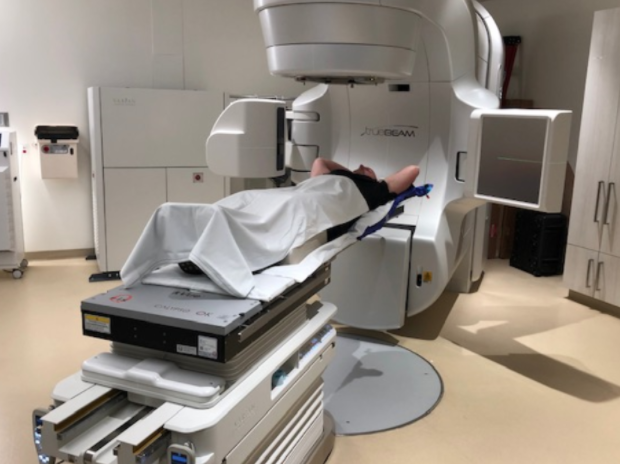
Positioning Your Body
You’ll meet with your radiation therapist and based on the cancer’s location, they will work with you to find the right position for treatment.
- You will most likely lie on your back with one or both arms raised above your head
- Sometimes you may need to lie on your stomach
Immobilizing Your Body
The radiation therapist will position you in a mask, cradle, or cushion customized to your body shape. These aids will keep you still and in the same position for each treatment.
When you find a comfortable position, a radiation therapist will mark your exact position with a marker or other method.
- You’ll stay in this immobilized position when you go through your series of treatments.
- If you do not feel comfortable in your position for treatment, let the radiation therapist know so that they can work with you to make you as comfortable as possible.
Click below to learn more about the devices your radiation therapist may use to help make sure your body is still and you are comfortable during treatments.
Mask
If you have cancer in the head and neck area, a mask is used to keep you in position. During treatment you are in the mask for about 10-12 minutes.
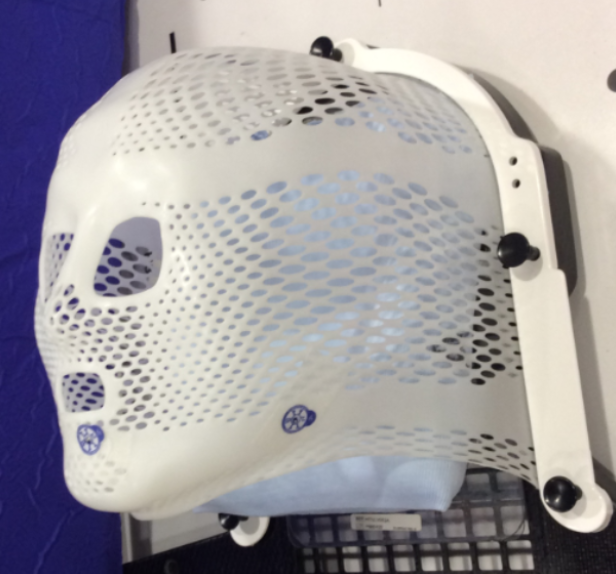
Cradle
Depending on your treatment area, a cradle may be used to keep you comfortable and in position during treatment.

Marking the Target Treatment Area
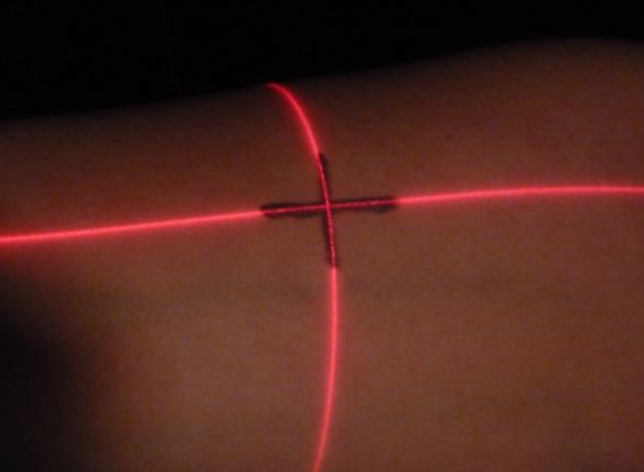
Marks on Your Skin
In order for your care team to be able to consistently see the treatment area, they make marks (with marker ink) on your body.
Skin Mark Tips:
- Your team will use these markings at every treatment visit, so please be as careful as possible when washing the areas.
- Sometimes the marks fade or wash off during bathing or showering, if this happens, don’t worry, just let your radiation therapist know.
- In some situations, your team will notify you if they need to make a more permanent mark on the skin.
Your Simulation Scan
During your simulation visit, scans will be taken by computerized tomography (CT), positron emission tomography (PET), or magnetic resonance imaging (MRI) scan.
These different types of body scans give your care team an image of the area they want to treat and areas they want to avoid.
Special Swallowing or Breathing Instructions
- Depending on where your treatment is, you may be given special breathing or swallowing instructions when these scans are taken.
- During your series of treatments, you may be asked to use these breathing or swallowing instructions again.
Click through below to learn more about each scan.
CT scan (computed axial tomography or CAT scan)
This noninvasive (does not involve inserting devices into the body) medical test uses special x-ray equipment with sophisticated computers to create images of the inside of your body.
Your doctor will decide if you need an IV insertion (small needle placed in your arm to deliver contrast dye through your vein).
IV contrast dye highlights areas of your body in scan images so your care team can see them more clearly.
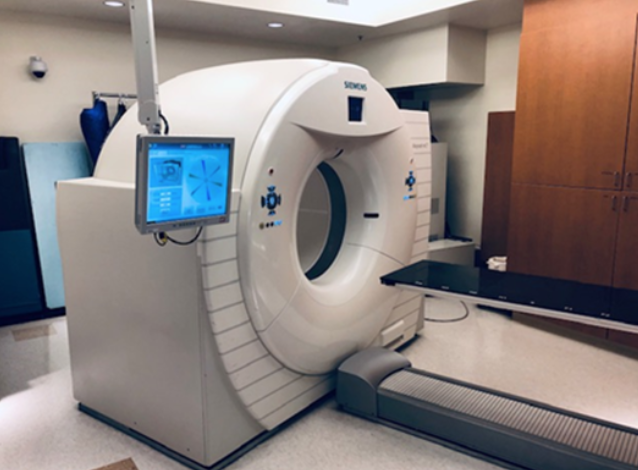
MRI scan (magnetic resonance imaging)
This noninvasive (does not involve inserting devices into the body) medical test or examination uses a large magnet and a computer to take pictures of the inside of your body.
Your doctor will decide if you will need an IV insertion (small needle placed in your arm to deliver contrast dye through your vein).
IV contrast dye highlights areas of your body in scan images so your care team can see them more clearly.
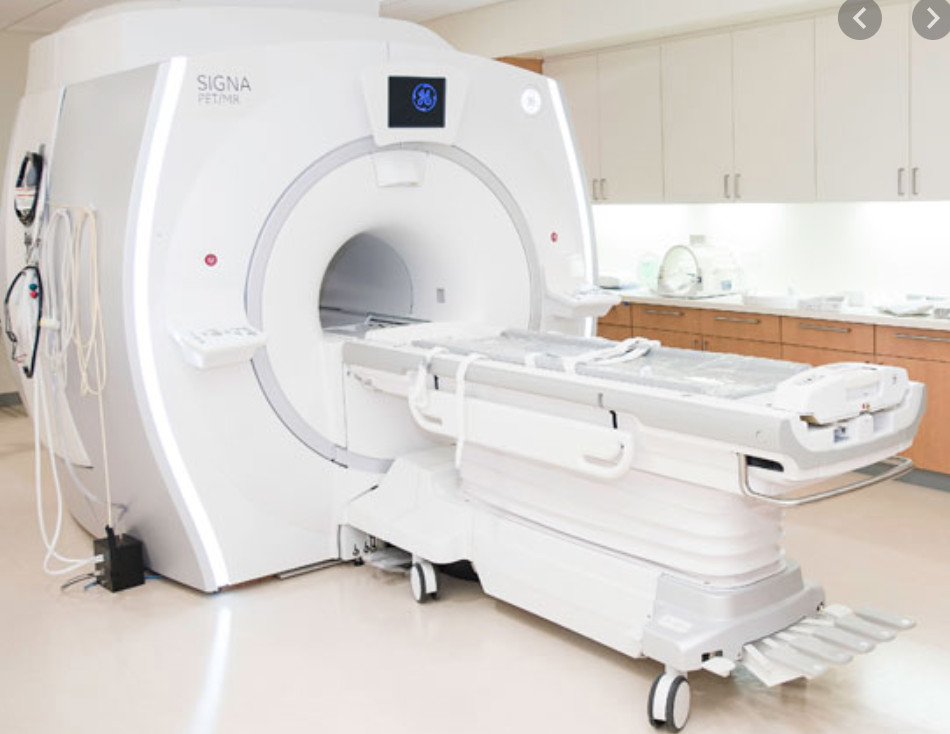
PET scan (positron emission tomography)
This type of imaging test measures important body functions, such as blood flow, oxygen use, and sugar (glucose) metabolism to help doctors evaluate how well organs and tissues are functioning.
Your doctor will decide if you need an IV insertion (small needle placed in your arm to deliver contrast dye through your vein).
IV contrast dye highlights areas of your body in scan images so your care team can see them more clearly.

What to Expect After Simulation

Treatment Planning
- At the end of your simulation visit, you will be given the date and time for your first treatment.
- The clinic does its best to work with your preferred times, but some flexibility is often required.
- Note that your treatment schedule may change over the course of your treatment and may not be set in stone.
With the simulation done, your care team will work together to plan your treatment. They will schedule a follow-up appointment to discuss your plan with you.
